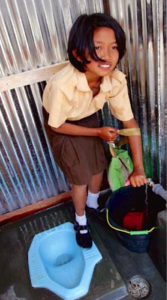Reducing the Burden of Poor Sanitation Through Health and Hygiene Interventions
Policy Issue
It is estimated that about 1.1 billion people worldwide practice open defecation as a result of a lack of access to sanitation facilities. Diseases caused by open defecation are preventable and disproportionately affect the poor. Millions of people contract fecal-borne diseases, most commonly diarrhea and intestinal worms, with an estimated 1.7 million people dying each year because of unsafe water, hygiene, and sanitation practices (WHO/UNICEF, 2010).
Context
In Indonesia, 110 million people lack access to proper sanitation and 63 million of them practice open defecation (WHO/UNICEF, 2012). Two of the four main causes of death for children under five in Indonesia (diarrhea and typhoid) are fecal-borne illnesses linked directly to inadequate water supply, sanitation, and hygiene issues (Ministry of Health, 2002). About 11 percent of Indonesian children have diarrhea in any two-week period, and it has been estimated that more than 33,000 die each year from diarrhea (Curtis, 2004).
Community-Led Total Sanitation (CLTS) is a program being widely implemented in more than 60 countries throughout Asia, Africa, Latin America, the Pacific, and the Middle East to address the sanitation burden. CLTS aims to create demand for sanitation by facilitating graphic community discussions of the negative health consequences of existing sanitation practices, rather than through the more traditional approach of providing sanitation hardware or subsidies.
As part of a learning agenda to address the burdens associated with poor sanitation, the Bill and Melinda Gates Foundation funded randomized controlled trials (RCTs) of sanitation and hygiene interventions in seven locations around the world. Shah, with her collaborator Lisa Cameron, led the Indonesia impact evaluation of CLTS in Indonesia.
Findings
- CLTS resulted in modest increases in toilet construction, reduced roundworm infestations, and decreased community tolerance of open defecation.
- Financial constraints faced by poorer households limited their ability to improve sanitation.
- Scale-up involved local governments taking over implementation from professional resource agencies. The sanitation and health benefits were found to accrue in villages where resource agencies implemented the program while local government implementation produced no discernible benefits.
- Initial levels of social capital were also found to be critical to program success. Villages with high initial social capital built toilets. In villages with low initial stocks of social capital, the community-led approach was counterproductive with fewer toilets being built than in control communities.





